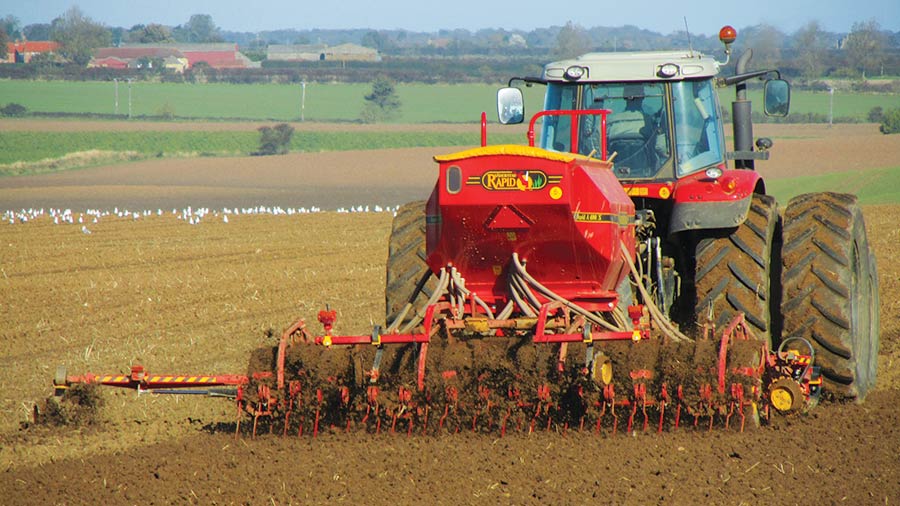6 steps to growing better spring barley for 2023 season
 © Limagrain
© Limagrain As the spring barley drilling season gets under way in some early areas, we look at six key points to consider when growing the crop.
We speak to arable technical manager at plant breeder Limagrain UK, Ron Granger, about how to get the most from the crop this season.
See also: Advice on growing malting barley to gain from high premiums
1. Understand end market/contract requirements
End user needs will influence many agronomic decisions, particularly nitrogen strategy, so it is essential growers are clear about the quality criteria that must be met.
This is particularly true for those looking to hit a certain grain nitrogen percentage to achieve a contract premium, notably distilling, which requires 1.65% nitrogen or lower, brewing 1.65-1.85%, and grain distilling at above 1.85%.
2. Choose the right variety
Growers should consider growing dual-use varieties suitable for the distilling or brewing markets, but if they can not meet those industry quality criteria, then the barley can be used by the feed sector.
Mr Granger recommends considering one of the dual-use varieties, such as his group’s Diablo, which has good yield performance. There are other dual use varieties available, such as Laureate.
3. Wait for good drilling conditions
Trials by the breeder show earlier drilling in the spring can improve yield potential. However, this is mainly only possible on lighter, more free-draining land, that will dry and warm quicker than a heavier soil type.
Mr Granger points out that early drilling will significantly increase disease risk, so he suggests growers consider more disease resistant varieties for this situation.
“Certainly, we saw the value of earlier drilling in spring 2022, with most growers drilling earlier than usual in most regions.
“This, along with upfront nutrition before the drought hit, was certainly part of the reason why growers achieved higher yield potential than originally anticipated,” he says.
4. Optimise seed rate
A survey of more than 100 growers by the plant breeder last year showed nearly half (49%) of growers were sowing spring barley at 300-350 seeds/sq m, and most (76%) were targeting a yield of 8t/ha.
This rate appears to be about right when drilling into good conditions.
However, Mr Granger says seed rates must be tailored to individual situations with the optimum seed rate for Diablo being 350 seeds/sq m when drilling into ideal conditions in mid-March.
Late-sown crops produce fewer tillers and therefore fewer ears, which must be compensated for by increasing seed rates.
If growers are forced to drill into April, due to the weather or for blackgrass control, pushing rates up to 400 to 450 seeds/sq m is advised.
5. Maintain tiller number
Once crops are established, Mr Granger says the best way to achieve high yields is to ensure high final ear counts. The AHDB Barley growth guide suggests final target ear populations should be about 775 ears/sq m.
“It is interesting to note that in 2019, higher yield potential was achieved from even higher final ear counts, approaching 800/sq m by harvest”.
An 8-9t/ha crop needs about 800 ears/sq m, which at a 350 seeds/sq m rate, equates to about 2.5-3 tillers per plant at harvest.
Drought conditions will cause tiller loss, so he says to ensure numbers are high enough at the outset by selecting high tillering varieties, using an appropriate seed rate, and incorporating a good crop nutrition regime.
He adds that when a standard seedbed application of 120kg/ha of nitrogen was compared to a split nitrogen application of 150kg/ha, with the additional 30kg/ha applied at late tillering, this resulted in a yield benefit of 0.4-0.5t/ha over a single seedbed dose, with little or no impact on grain nitrogen.
“Higher yielding varieties respond positively to higher nitrogen inputs, due to their increased yield potential and dilution of grain nitrogen content,” he says.
6. Optimise other nutrients
Alongside nitrogen, optimising other macronutrients, such as phosphate, potash, magnesium and sulphur, has proven beneficial to tiller retention and final yield.
These should be applied in the seedbed or soon after drilling to promote strong rooting and early plant growth.
“Tissue analysis of the young growing crop can help identify any shortfalls in nutrition before visible symptoms appear, and is a relatively inexpensive way of targeting a high yielding crop,” says Mr Granger.
Additional micronutrients, such as manganese, zinc, copper, iron, and boron, applied at the stem extension phase into flowering, are also useful, ensuring a healthy crop and good ear fertility, while also helping secure high grain number and maximum yield potential.
At least two fungicides are recommended to maintain tiller numbers and healthy plants. Typically, the first application is at GS25-31, with the second targeted between GS39-55.

